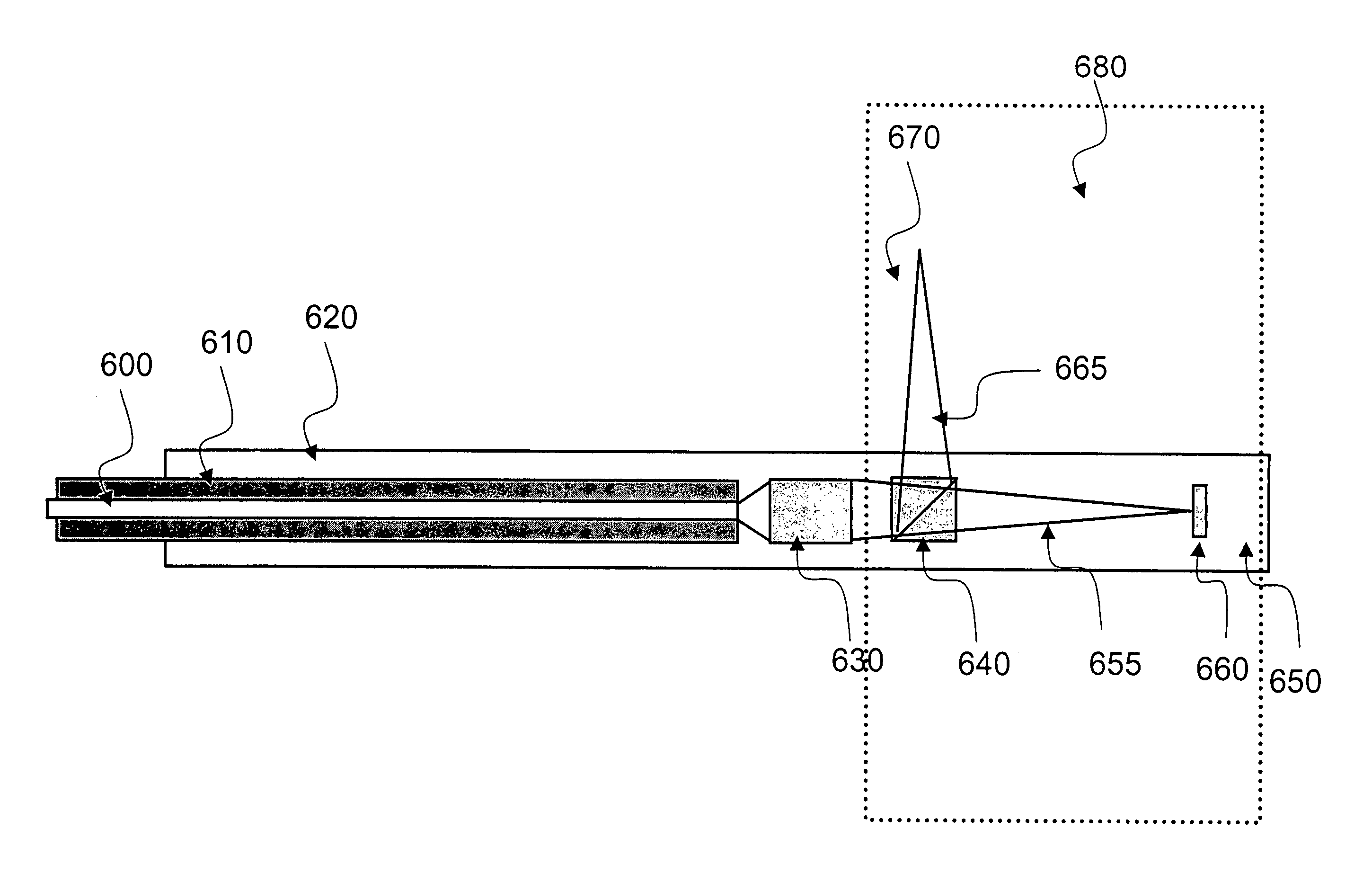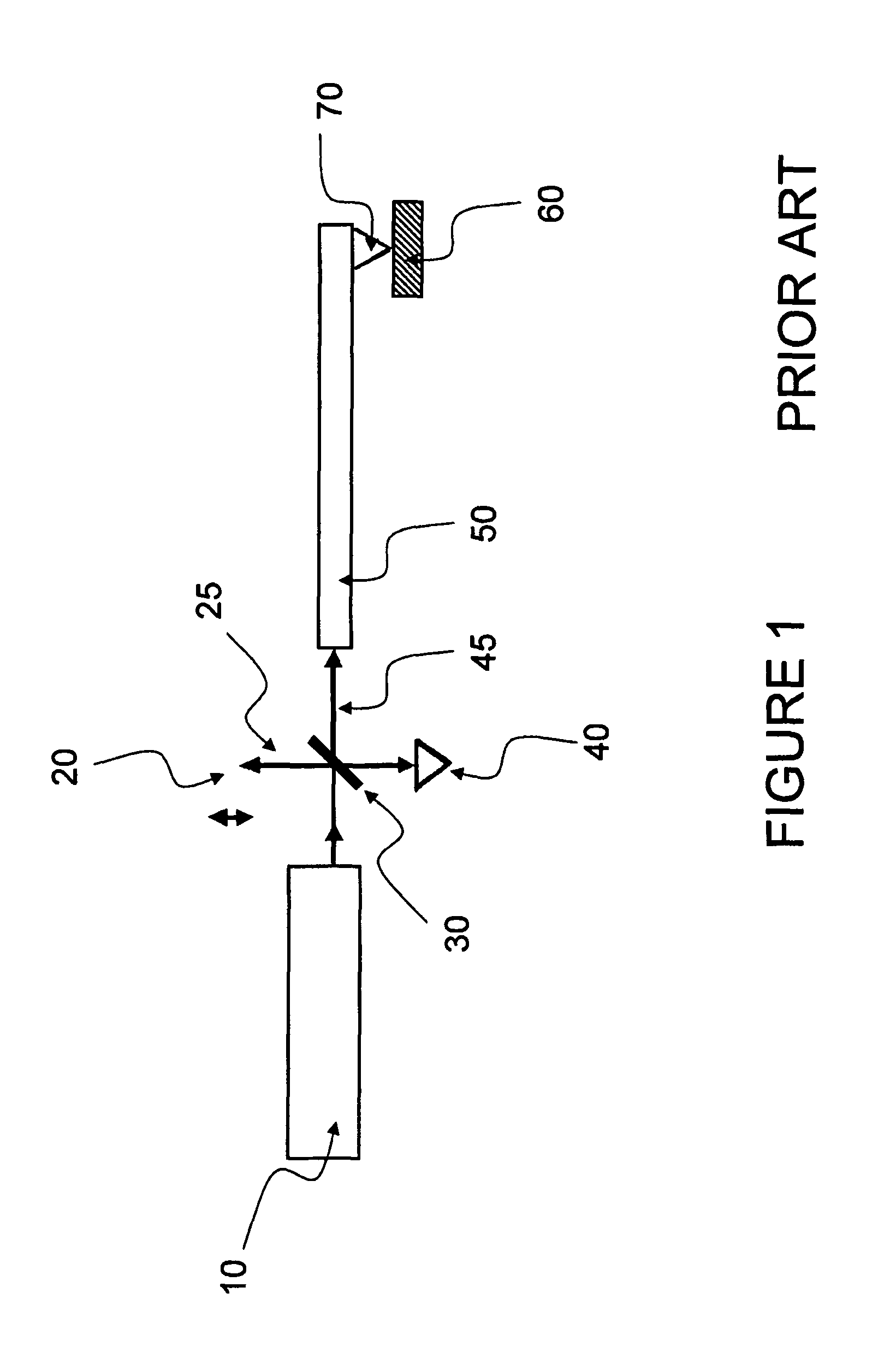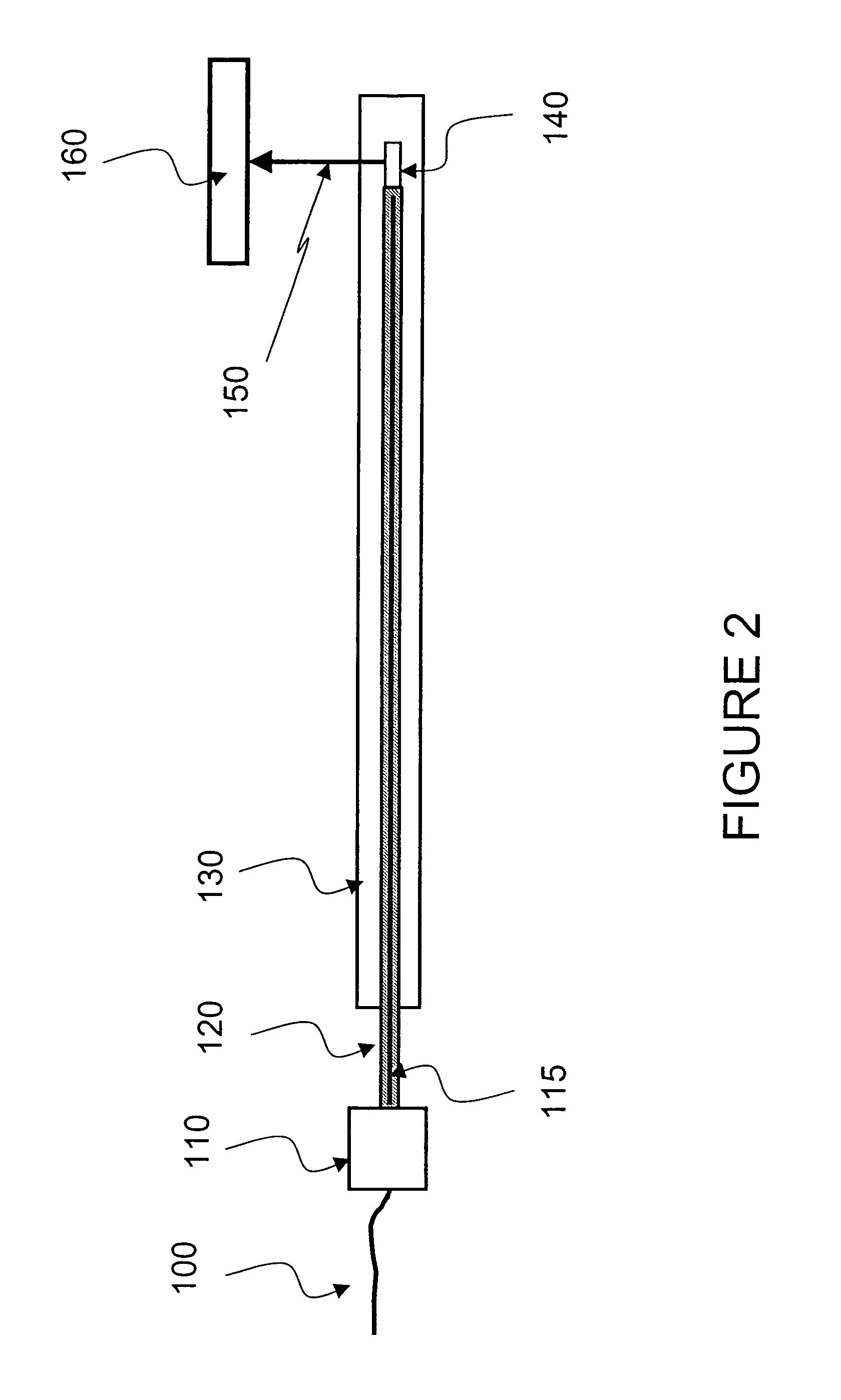Devices and arrangements for performing coherence range imaging using a common path interferometer
a coherence range and interferometer technology, applied in the field of optical imaging, can solve the problems of path length mismatch, image drift off the screen, and the use of optical fiber based catheters in oct is problematic, so as to minimize the dispersion and/or polarization mismatch between the reference and sample arms, and minimize the path length mismatch.
- Summary
- Abstract
- Description
- Claims
- Application Information
AI Technical Summary
Problems solved by technology
Method used
Image
Examples
Embodiment Construction
[0028]Exemplary embodiments of the present invention provides a further OCT paradigm that can place the “reference arm” within the body of the catheter, thereby forming a common-path interferometer.
[0029]Exemplary embodiments of the system, arrangement and device capable of employing such configuration are shown in FIGS. 3 and 4. For example, a common-path interferometer may be constructed by facilitating one or more of the optical elements in the distal optics 250, 300 of the catheter to redirect some light back to the OCT system. An optical interface 307 of an object 310 as shown in FIG. 4 can redirect a fraction of light 350 back to the OCT system, and may transmit the majority of the light 320 to the sample 305, which is reflected in a path 330. Paths 330 and 350 can be combined as passes 330 through the optical element 310.
[0030]Since the both paths 330, 350 are located approximately at or near the tissue surface, the paths can become inherently matched, and would likely not be...
PUM
 Login to View More
Login to View More Abstract
Description
Claims
Application Information
 Login to View More
Login to View More - R&D
- Intellectual Property
- Life Sciences
- Materials
- Tech Scout
- Unparalleled Data Quality
- Higher Quality Content
- 60% Fewer Hallucinations
Browse by: Latest US Patents, China's latest patents, Technical Efficacy Thesaurus, Application Domain, Technology Topic, Popular Technical Reports.
© 2025 PatSnap. All rights reserved.Legal|Privacy policy|Modern Slavery Act Transparency Statement|Sitemap|About US| Contact US: help@patsnap.com



